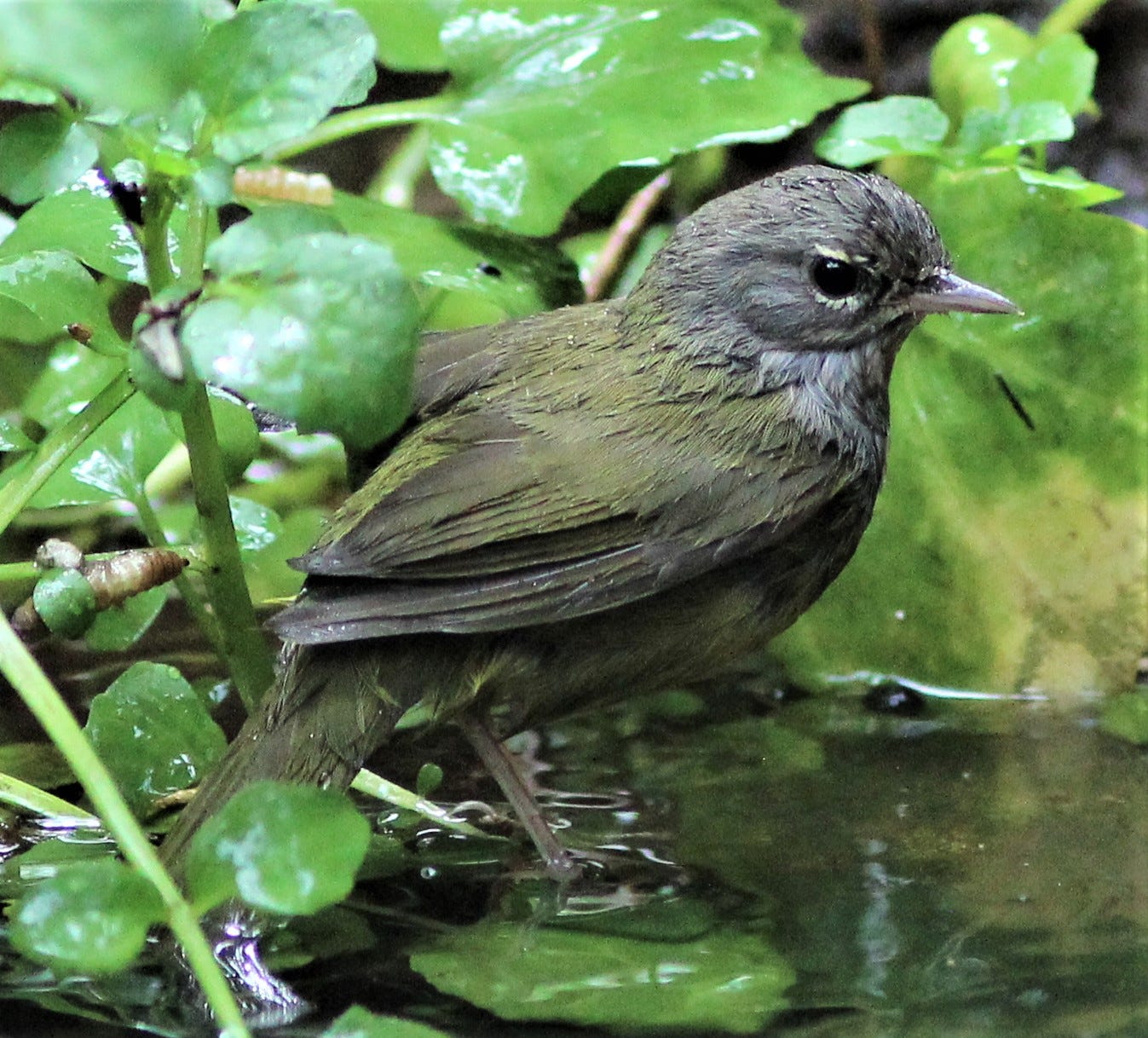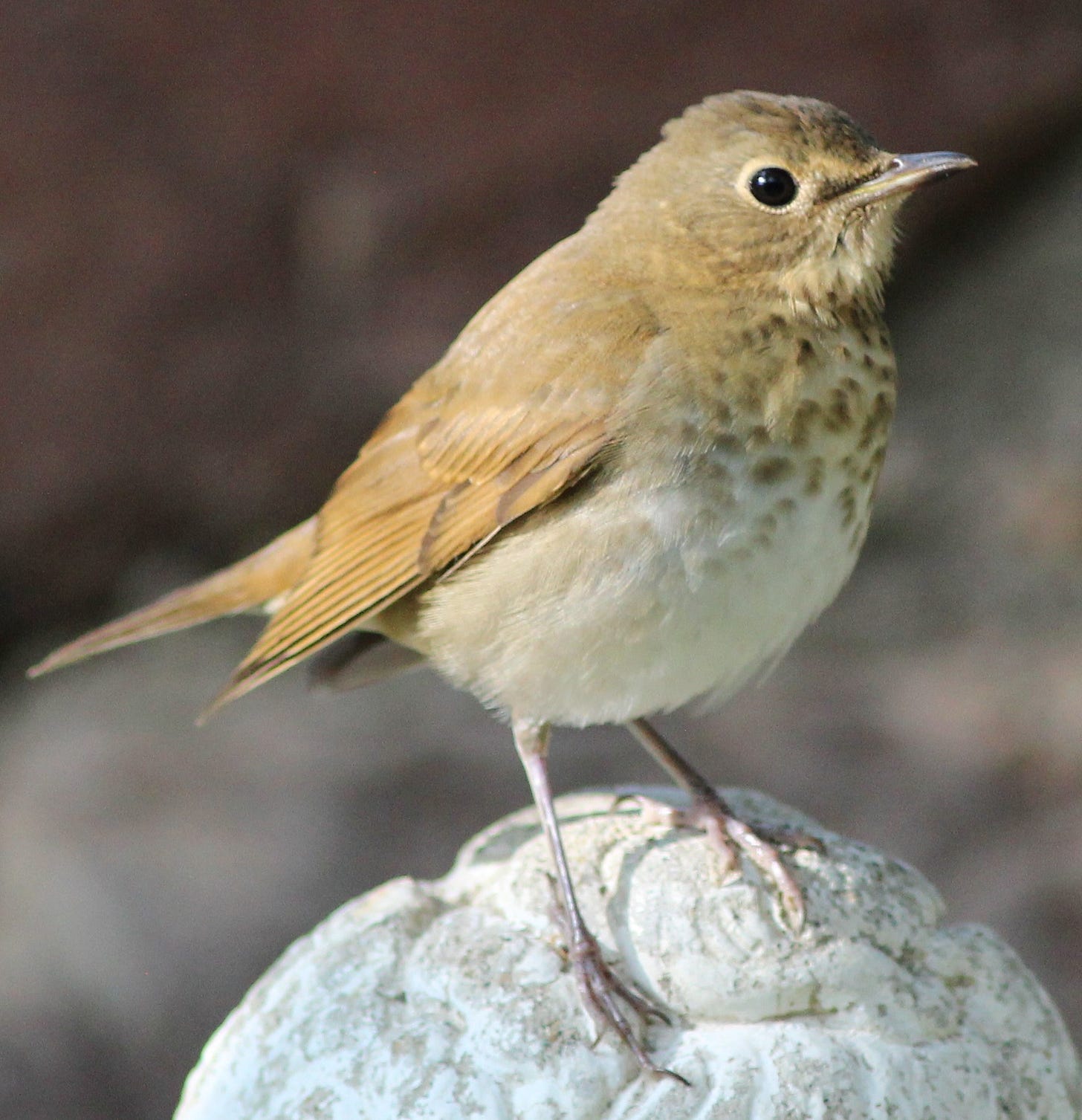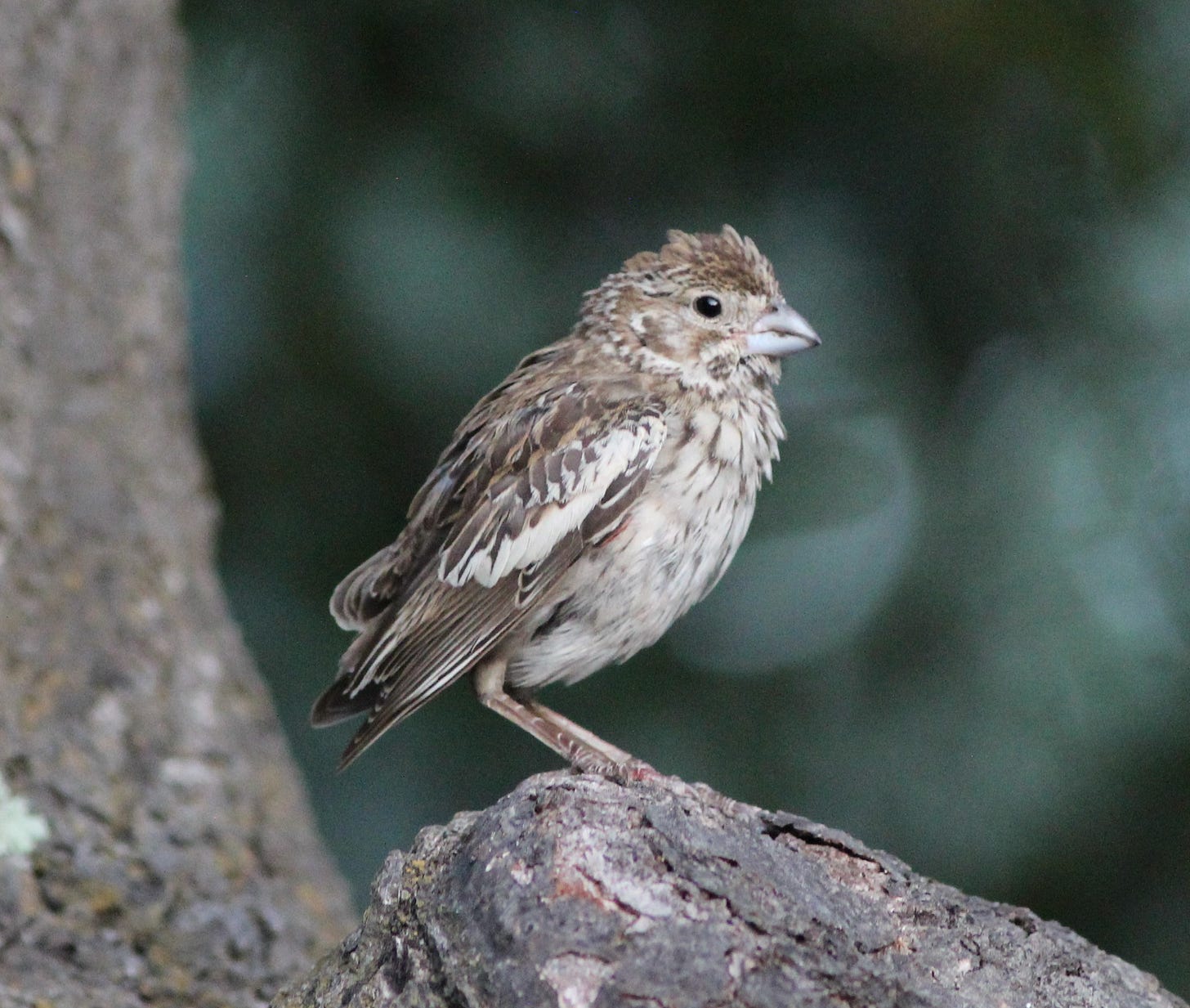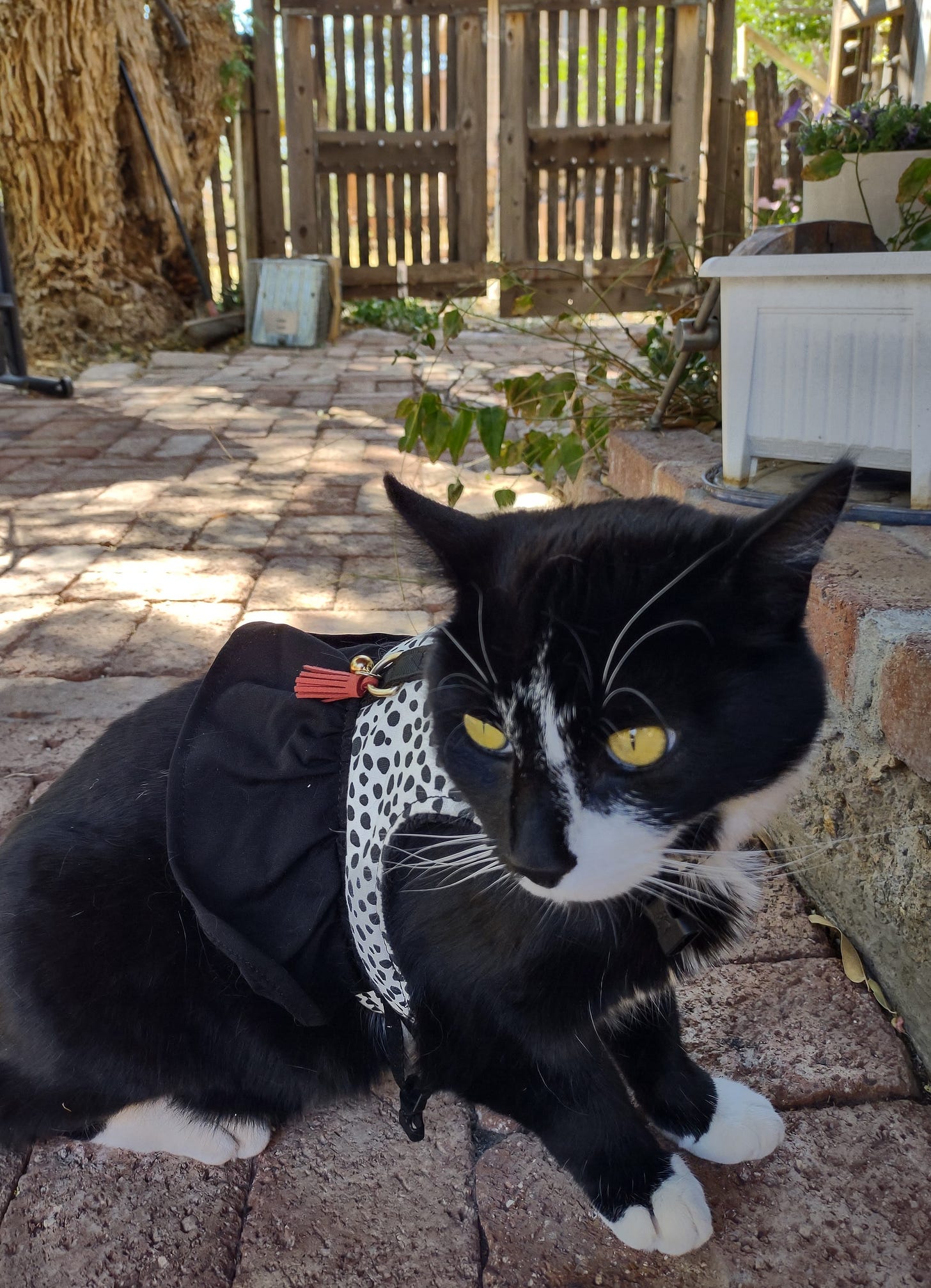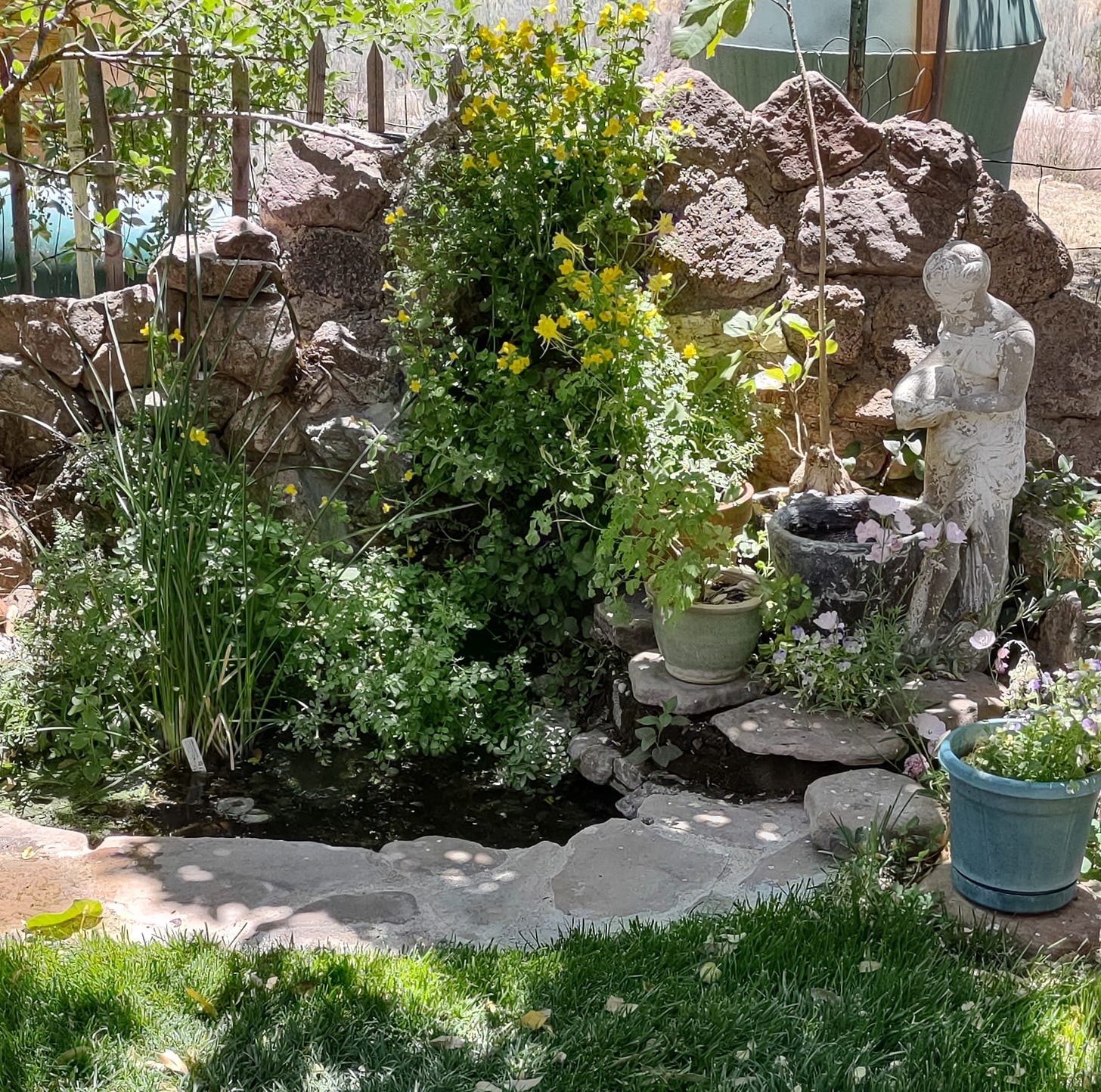
Day 177 of the Quarantine (September 7, 2020, Labor Day)
As a clear announcement of fall’s peaking migration, this morning’s Covid fountain gifted me with ten different warblers, including some new for the quarantine. They came one after another but so close together I had trouble photographing them. A MacGillivray’s in the watercress to wet its quills. A Nashville and Virginia’s among the stones to wet their tongues. All three so yellow-breasted and blue-headed that I could hardly keep track of them with the orange-crowned, yellow-rumped, and black-capped Wilson’s warblers like nuggets of sun. And then something I’ve never seen before except in books (which I had to refer to)—a plain-faced, beady-eyed hermit warbler. Life bird #430. Number two in my PJs. The new-to-the-yard yellow-breasted chat felt anticlimactic.
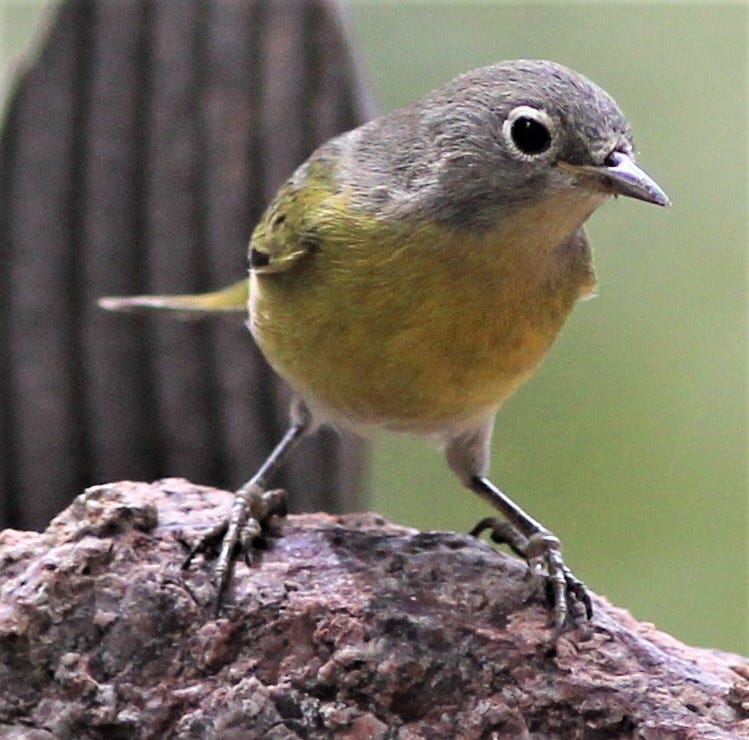
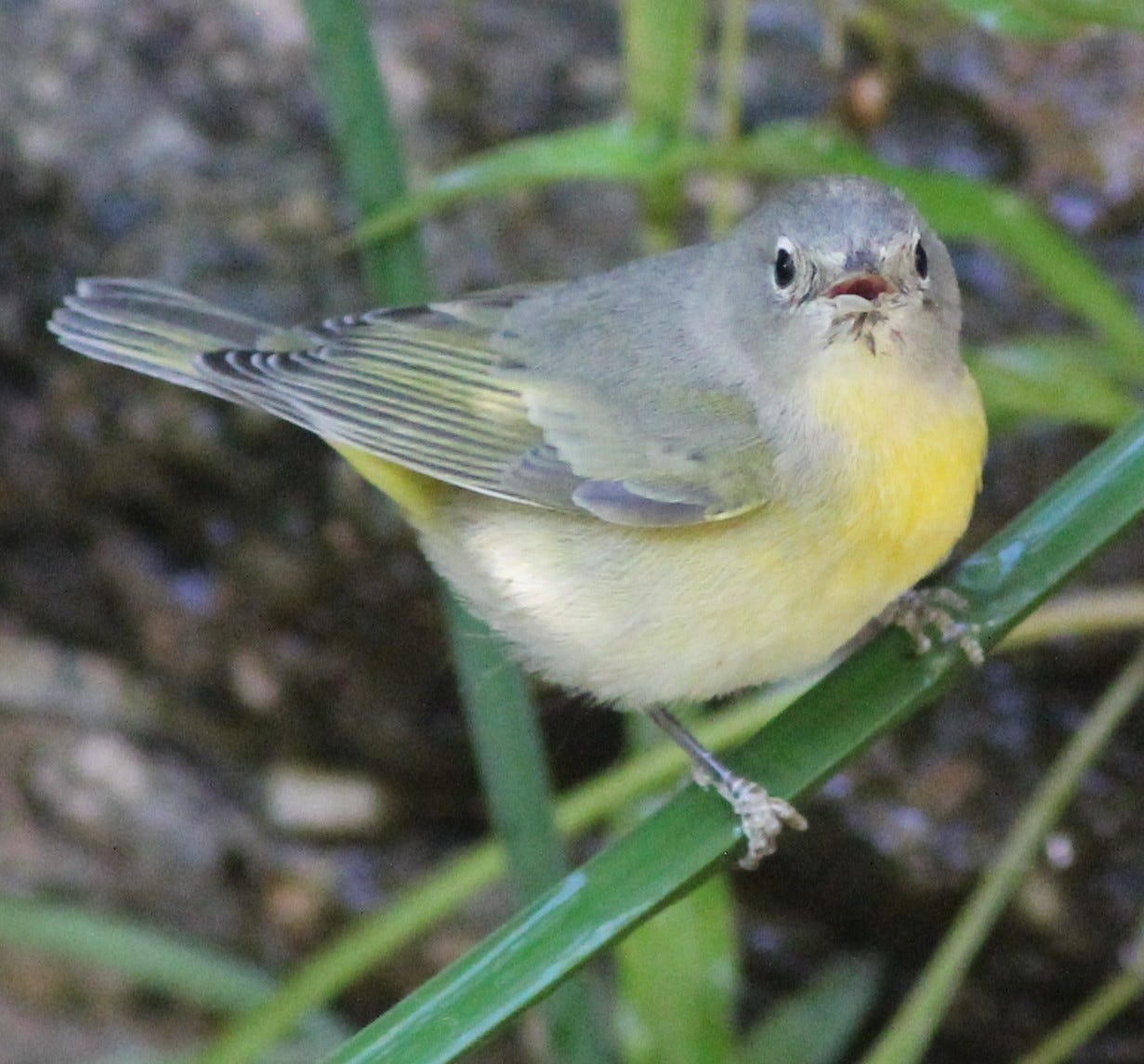
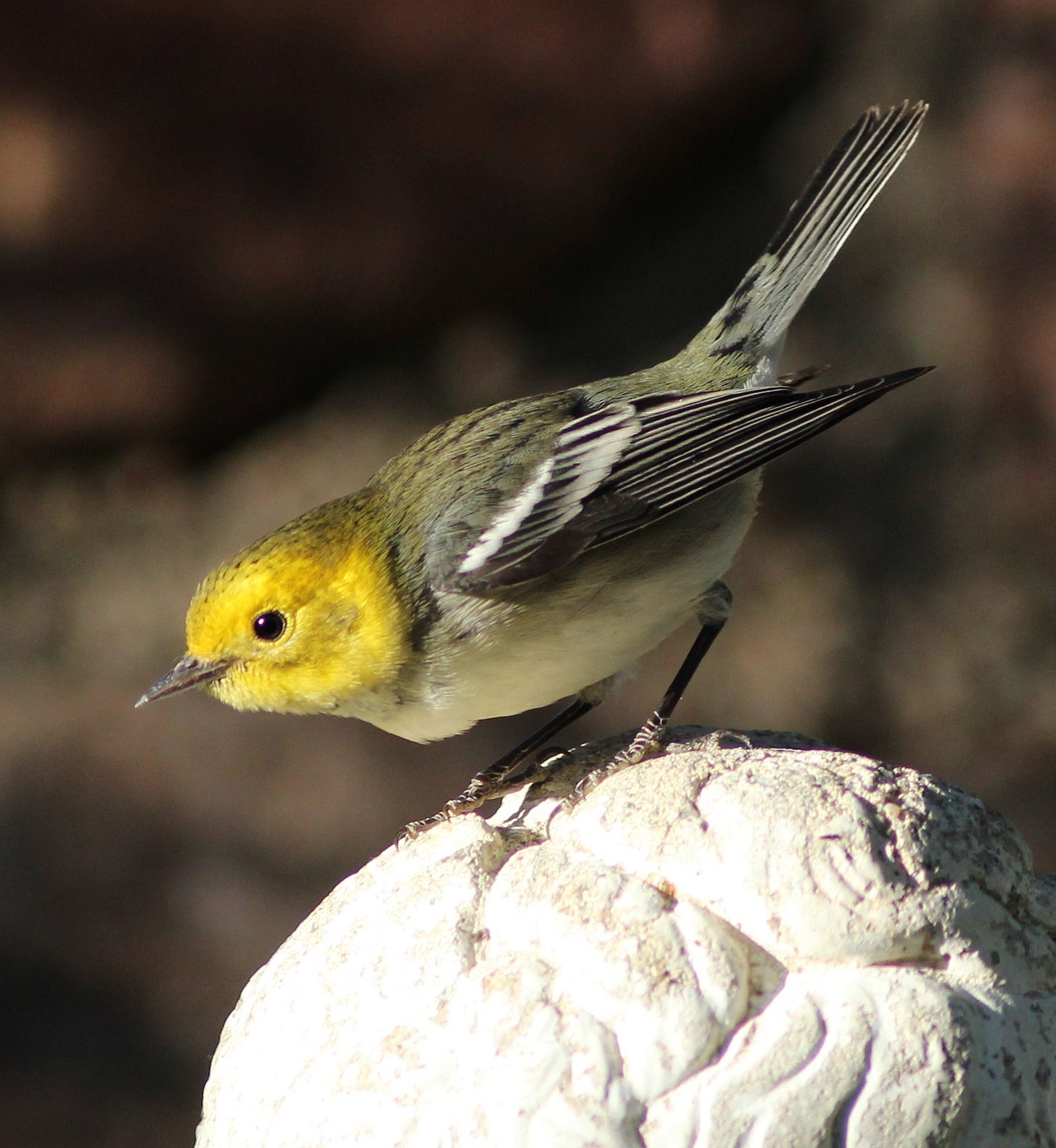
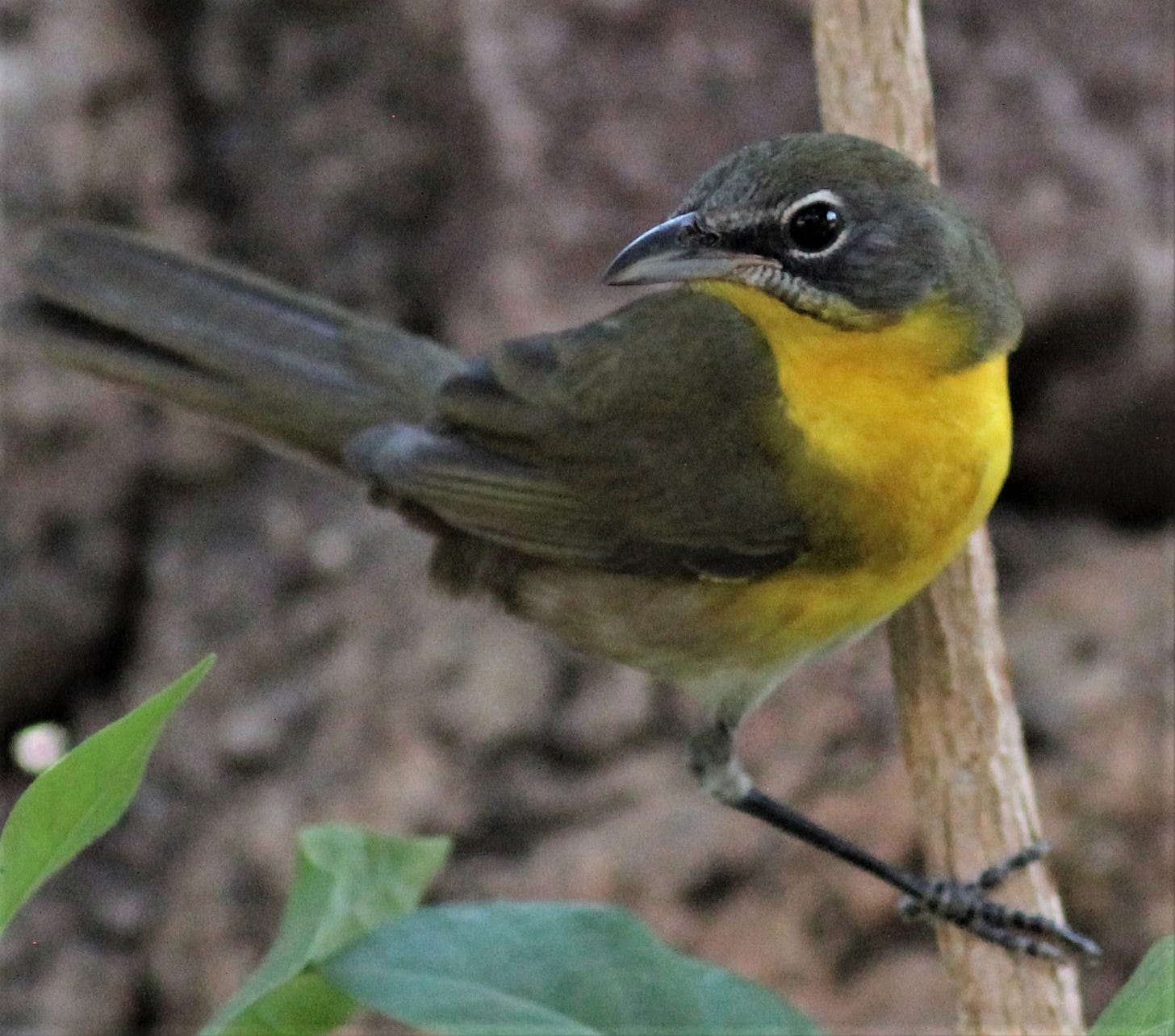
And yesterday’s Swainson’s thrush (which I first listed as a hermit thrush until I looked at the photos and got some expert advice on the Facebook group, What’s This Bird?) made the eBird Rare Bird Alert for September 6. The only Swainson’s thrush reported in Cochise County.
Maybe it’s the heat. Or the failed monsoons. Or the predators.
For two days running the kitties have brought me unexpected birds, like they know I’m listing species. “Here you go,” they seem to say, “what about this one? You don’t have this one yet do you?” Bandit brought me a Cassin’s vireo yesterday, which I rarely see here, and then this evening Bella brought in a bird I couldn’t identify. (Both were very much alive.) I released it, minus its tail, and took photos to post for the birder hive mind. Turns out it was a young lark bunting—a new bird for the yard, #112. Yes, I counted it. The vireo too.
I count the maimed birds, whether they wash up on the beach in Oregon (Cassin’s auklet, life bird #429) or get hit by a car or smash into a window or the cats drag in. I feed the birds, which feed the cats…a problem I struggle with and have tried to prevent—which mostly amounts to throwing my granddaughter’s forgotten shoes at stalking felines. Our two cats are feral, trapped here as kittens, spayed and neutered, along with their parents, and released. Bandit and Bella have adopted us and come and go as they please—although they enjoy getting good ear scrubs and sleeping at the foot of our bed. The Wife says she never sees them unless I’m around and expresses some disgust that they only sleep with us when I’m in the bed. “And I feed them!”
Birders insist that cats remain indoors. They often site a 2013 study published in Nature Communications that estimates that free-ranging domestic cats in the contiguous United States kill between 1.4 and 3.7 billion birds every year. Billions of native birds ended by millions of invasive cats. In Bisbee if you buy or rent a house it comes with at least one cat. By my count here, we have six.
I won’t argue the science, even if, as other researchers say, the kill “estimates” are based on “shaky statistics,” that the authors of the study had to approximate the number of unowned cats in the U.S. because the real number is unknown. The truth is: My cats kill birds. Too many birds. I can’t keep them indoors, they’re feral. Shall I kill the cats to save the birds? Or stop attracting and feeding warm, feathered delicacies for the cats? I don’t know. I’m open to suggestions. Kitty Soft Paws? Gaudy vests with bells and leash? Try putting those on feral cats, which I have.
Birders can be a strange lot. Freak about cats killing birds (I get mail) while killing the planet by driving—or flying—hundreds of miles at the chance to see a rare bird. Here’s some science for you: Last year, the National Audubon Society published a study showing that two-thirds of North American birds face extinction from global temperature rise. Nearly 400 species. One reason: Climate change is causing mismatches in food supplies for migrating birds. And it’s worse in the tropics. I’m waiting for the Audubon study on the risks to birds from globe-trotting listers.
Humans are red in tooth and claw. Something for me to think about when the next eared quetzal hits the listserv.
Non-native or not, the cats belong in this place as much as the birds, maybe more so, since the cats were born and raised here and most of the birds are passing through as the planet leans toward thermogenesis. In the end, I’ll do nothing but fill my gas tank. And throw shoes.
Thanks for subscribing! More on the way….



